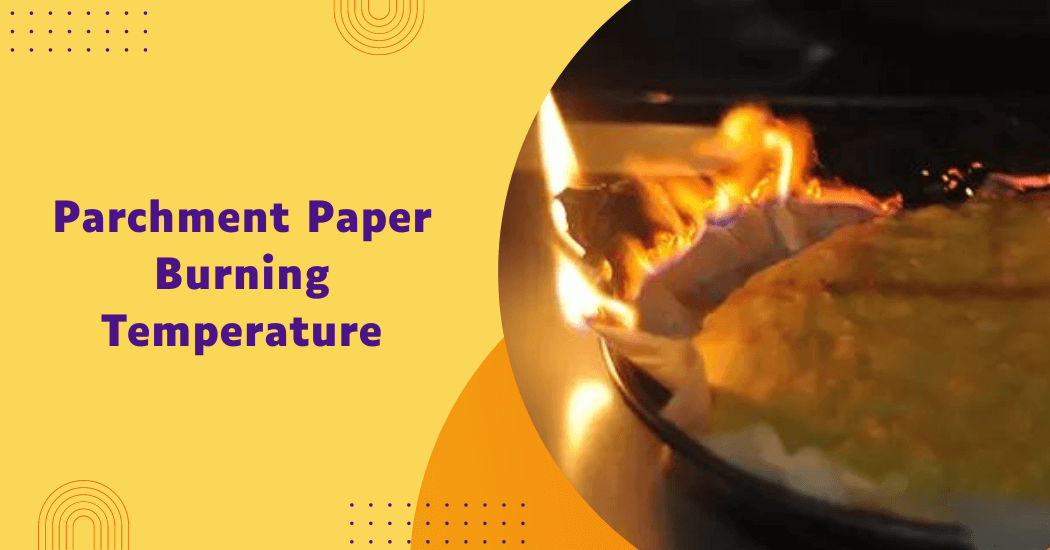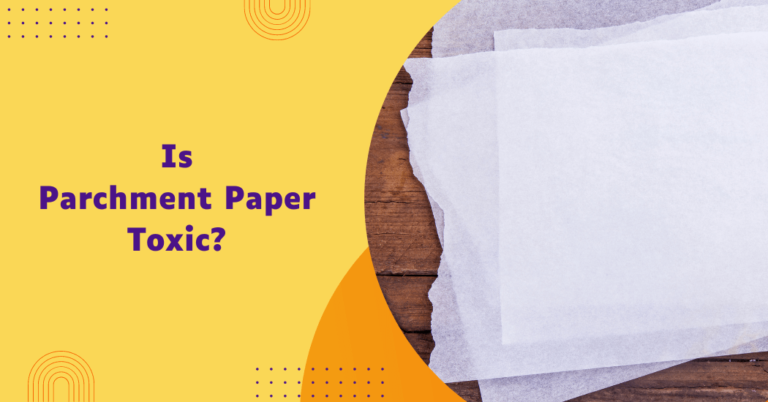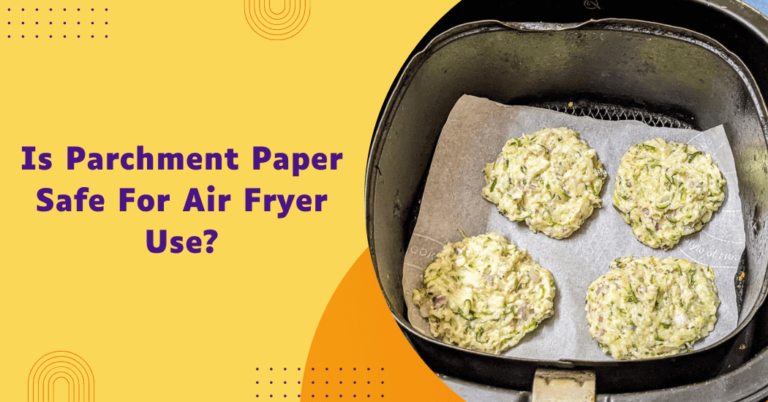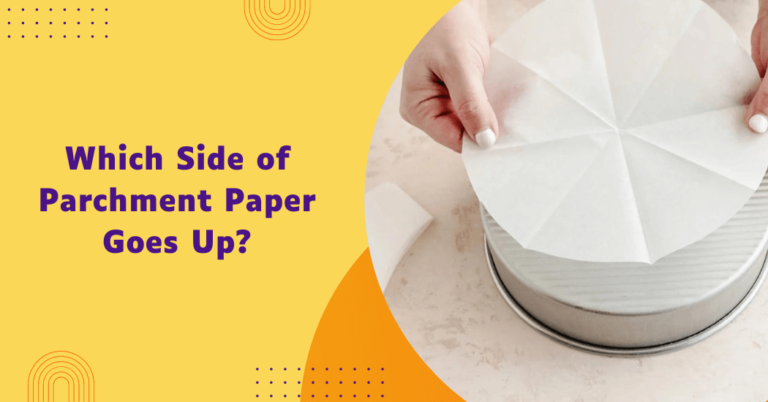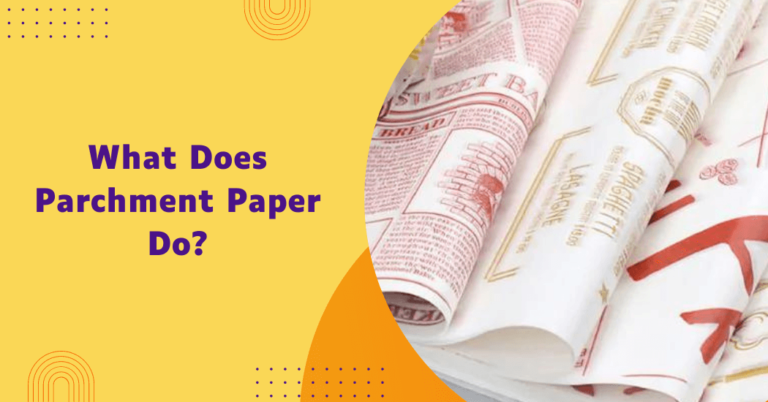At What Temperature Does Parchment Paper Burn?
Parchment paper is a versatile kitchen essential used for baking, roasting and even steaming. However, understanding its limitations, especially regarding heat resistance, is crucial for safe cooking practices.
One common question that arises is, “What temperature does parchment paper burn?”
In this comprehensive guide, we delve into the science behind parchment paper, explore its burning point and provide tips to prevent accidents in the kitchen.
Whether you’re an amateur baker or a seasoned chef, knowing how to handle parchment paper safely is essential for achieving culinary success without compromising on safety.
Join us as we uncover the answers to this burning question and equip you with the knowledge to elevate your cooking experience.
What temperature does parchment paper burn?
Parchment paper is made of cellulose fibres, which are derived from plants. These fibres are bonded together using a wet-strengthening agent that gives the paper its non-stick properties. However, when exposed to high temperatures for extended periods, these bonds break down and the paper becomes more susceptible to burning.
The burning point of parchment paper is approximately 420°F (215°C). This temperature is also known as the “smoke point” or the point at which the paper starts to release smoke.
However, this does not mean that parchment paper will immediately catch fire at this temperature. It can withstand higher temperatures for short periods without burning. But prolonged exposure to heat can cause it to burn and even catch fire eventually.
It’s important to note that the temperature at which parchment paper burns can vary depending on its quality and thickness. Cheaper, thinner papers may have a lower smoke point, while higher-quality thicker papers can withstand higher temperatures without burning.
Factors influencing combustion temperature
Several factors can affect the burning point of parchment paper, including:
- Moisture content: Like most paper products, parchment paper contains a small percentage of moisture. As the water evaporates at high temperatures, the paper becomes drier and more susceptible to burning.
- Cooking duration: Longer parchment paper is exposed to heat, the more likely it is to burn. This is because the bonds within the paper continue to break down, making it weaker and more vulnerable to heat.
- Thickness: Thicker parchment paper generally requires more heat to ignite compared to thinner paper. Thicker paper also tends to burn at a higher temperature once ignited.
- Type of oven: Type of oven used can also have an impact on the burning point of parchment paper. For example, a conventional oven may produce uneven heat distribution, causing some areas of the paper to burn faster than others.
- Type of food: Some foods such as those high in sugar or fat content, can cause parchment paper to burn faster due to the high heat they generate during cooking.
- Oven temperature control: A faulty or inaccurate oven thermostat can result in higher than intended temperatures, leading to faster burning of parchment paper.
Knowing these factors can help you take necessary precautions to prevent burning your parchment paper while cooking or baking.
How do I prevent my parchment paper from burning?
Fortunately, there are several simple steps you can take to prevent your parchment paper from burning:
- Adjust oven temperature: If using a conventional oven, consider lowering the temperature by 25°F (14°C) and extending cooking time if needed. This allows for more even heat distribution and reduces the risk of burning.
- Use quality parchment paper: Investing in higher-quality parchment paper can not only enhance your cooking experience but also reduce the risk of burning. Thicker, more durable papers have a higher heat resistance and are less likely to burn.
- Avoid overlapping: When using multiple sheets of parchment paper, avoid overlapping them as this can trap heat and cause uneven baking, increasing the chances of burning.
- Trim edges: If the parchment paper extends beyond the edges of your baking pan, it can easily catch fire from heat sources such as gas burners or electric coils. Trimming the edges prevents this possibility.
- Monitor cooking time: Keep a close eye on your food while it’s cooking and remove it from the oven promptly once done to avoid prolonged exposure to high temperatures.
- Use a baking mat: Consider using a silicone or fibreglass baking mat instead of parchment paper for high-heat cooking methods such as broiling. These mats can withstand higher temperatures without burning and are reusable, making them a more sustainable option.
By following these tips, you can safely use parchment paper in your cooking and baking endeavours without the risk of burning or accidents in the kitchen.
Potential hazards of parchment paper burning
While parchment paper is generally safe for use in the kitchen, it’s essential to be aware of potential hazards that can arise from its burning. These include:
- Smoke inhalation: Parchment paper, when burned, releases smoke that can be harmful if inhaled in large amounts. It’s important to ventilate your kitchen well and avoid breathing in any excess smoke.
- Fire risk: In extreme cases, parchment paper can catch fire and potentially cause a kitchen fire. Always keep a close eye on the paper while cooking and know how to properly extinguish a small fire if it occurs.
- Food contamination: If the parchment paper burns and comes into contact with your food, it can leave behind blackened bits or ash, which can contaminate your dish and alter its taste.
- Environmental impact: Burning parchment paper releases carbon emissions, contributing to air pollution and climate change. It’s best to avoid unnecessary burning of parchment paper whenever possible.
- Waste: Burnt parchment paper cannot be recycled and it’s not compostable. It adds to the waste in landfills, so it’s important to use it responsibly and dispose of it properly.
Alternatives to parchment paper
If you’re concerned about the potential hazards of parchment paper or simply want to explore other options, here are some alternatives you can try:
- Silicone baking mats: These non-stick mats provide a similar function to parchment paper and can be reused multiple times.
- Aluminium foil: This is a versatile option that can also be used as a substitute for parchment paper. However, it’s not recommended for use with acidic or high-fat foods as it can react and cause off-flavours.
- Butter or oil coating: When baking items like cookies, you can grease your baking sheet with butter or oil instead of using parchment paper. This method may alter the texture of your baked goods slightly but will prevent them from sticking to the sheet.
- Non-stick baking spray: Convenient and mess-free option, non-stick baking sprays can be used in place of parchment paper for greasing your baking trays or pans.
- No lining at all: Some recipes may not require any lining at all, such as when baking directly on a greased pan or using a non-stick pan. It’s always best to check your recipe and use your discretion when deciding whether to line your baking tray or not.
FAQs – Parchment Paper Burning Temperature
What happens if parchment paper burns?
When parchment paper burns, it can undergo a process of combustion that results in it turning black, disintegrating and producing smoke. Typically, this occurs when the paper is exposed to temperatures beyond its heat-resistant limit.
Can parchment paper be used in high-temperature cooking?
Parchment paper is heat-resistant up to 425°F (218°C), making it suitable for most baking and cooking methods. However, when exposed to temperatures above this threshold, it can burn or even catch fire. It’s best to be cautious and avoid using parchment paper in extremely high-heat cooking methods.
Can I reuse parchment paper?
Parchment paper can be reused a few times, depending on its quality and the type of food cooked on it.
If used for greasy or high-fat foods, the paper may become brittle and difficult to reuse. It’s always best to discard used parchment paper and use a fresh sheet for each cooking session.
Is it safe to use parchment paper in the oven?
Yes, parchment paper is safe to use in the oven when used correctly. It’s important to follow safety precautions and tips to prevent any potential hazards or accidents.
Ultimately, it’s up to personal discretion whether to use parchment paper or explore alternative options for cooking and baking. Remember to always prioritize safety and sustainability in your kitchen practices.
Conclusion
In conclusion, the burning point of parchment paper is a crucial consideration for various cooking and baking endeavours. While parchment paper is designed to withstand oven temperatures up to around 420°F (215°C), exceeding this threshold can lead to undesirable outcomes such as smoke, charring or even combustion.
Thus, it is paramount to adhere to recommended temperature guidelines and exercise caution when using parchment paper in high-heat settings.
By doing so, you can ensure both the safety of your culinary creations and the preservation of your kitchen environment.
